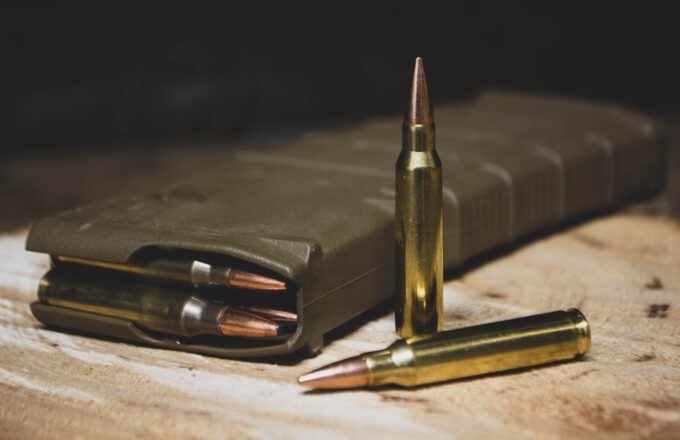
Image by Will Porada.
It has been a particularly sad 4th of July. In Highland Park, Illinois, a young gunman opened fire on a parade with a high-caliber rifle, killing 7, wounding at least 47 others and traumatizing many more. In the same weekend, more than 50 people were shot in New York City. It is conceivable that those shootings were made possible because of a loose interpretation of the Second Amendment to the Constitution.
The Second Amendment to the United States Constitution, ratified on December 15, 1791, reads: A well regulated militia, being necessary to the security of a free State, the right of the people to keep and bear arms, shall not be infringed. This amendment was inspired by the right to keep and bear arms recognized in the English common law, and by the English Bill of Rights of 1689 that prevailed in the American colonies. The scope and prerogatives arising under the Second Amendment have been the subject of considerable controversy, and its vague interpretation has had serious legal consequences.
Opponents of gun control emphasize the last part of the sentence, “…the right of the people to keep and bear arms, shall not be infringed,” neglecting that this constitutional entitlement is centered on a “well regulated militia,” which at the time was deemed “necessary to the security of a free state.” As noted by Alexander Hamilton in the Federalist Papers, a well regulated militia is “the most natural defense of a free country.”
The intimate connection between the right to bear arms and the natural rights of self-defense and resistance to oppression noted by Sir William Blackstone (1723-1780,) an English jurist known for writing the Commentaries on the Laws of England, is critical to understand the meaning and purpose of the Second Amendment. The civic duty to act in concert with fellow citizens to defend the state is also at the core of the right to bear arms under the Pennsylvania Constitution of 1776: “the people have the right to bear arms for the defence of themselves and the state.”
Obviously, the exacting circumstances to defend the state during the American Revolution were totally different from those existing now. On September 17, 2013, during an interview with John Hockenberry in WNYC radio, former Associate Supreme Court Justice Ruth Bader Ginsburg, discussed her dissent in District of Columbia v. Heller (2008), where the Supreme Court held that the Second Amendment protects an individual right to possess a firearm unconnected with service in a militia, and to use that arm for traditionally lawful purposes, such as self-defense within a home.
Justice Ginsburg said, “The Second Amendment has a preamble about the need for a militia…Historically, the new government had no money to pay for an army, so they relied on the state militias. And the state required men to have certain weapons and they specified in the law what weapons these people had to keep in their home so that when they were called to do service as militiamen, they would have them. That was the entire purpose of the Second Amendment… So, the Second Amendment is outdated in the sense that its function has become obsolete.”
Also in a dissenting opinion, Justice John Paul Stevens stated that the court’s judgement was a “strained and unpersuasive reading” which overturned longstanding precedent. He stated that the court had “bestowed a dramatic upheaval in the law”.
Thus, a fair textual and contextual reading of the Second Amendment clearly indicates that those entitled to claim a constitutional right to bear arms are not average citizens, but rather those belonging to a group of civilians trained as soldiers who, in case of an emergency –such as a threat to the state—must become available to supplement the regular army.
At the time the second amendment was enacted, the Founding Fathers couldn’t have predicted the tremendous technological advances in modern weaponry. There are considerable differences between the muskets used during revolutionary times and assault weapons readily available today, capable of killing scores of people, including children, in a matter of seconds.
The erroneous identification of the “right to bear arms” with an individual right finds unfortunate support in a misguided, but culturally entrenched, understanding of virility. Far too many individuals equate gun possession with manhood. But, as New York journalist Michael Hart observes, “The adults who promote gun culture need to be understood and I’m not sure that as a society we’ve come close to doing that yet. I don’t understand at all why men – and it’s overwhelmingly men – feel that owning a gun is something they need to do. It’s somehow a part of their identity – but what does that mean? Is that identity so hollowed out, so fearful, so worshipful of absolute deadly power that guns supply a missing link? Do these men feel bigger, stronger, more themselves by owning a gun? Does the prospect of killing another human being draw them?”
The loose interpretation of the Second Amendment is responsible, to a great extent, for thousands of lives lost every year. The absence of effective legal restraints to the marketing of arms in this country, resulting from this misguided understanding, will continue to cast a shadow over our survival as a truly civilized society.